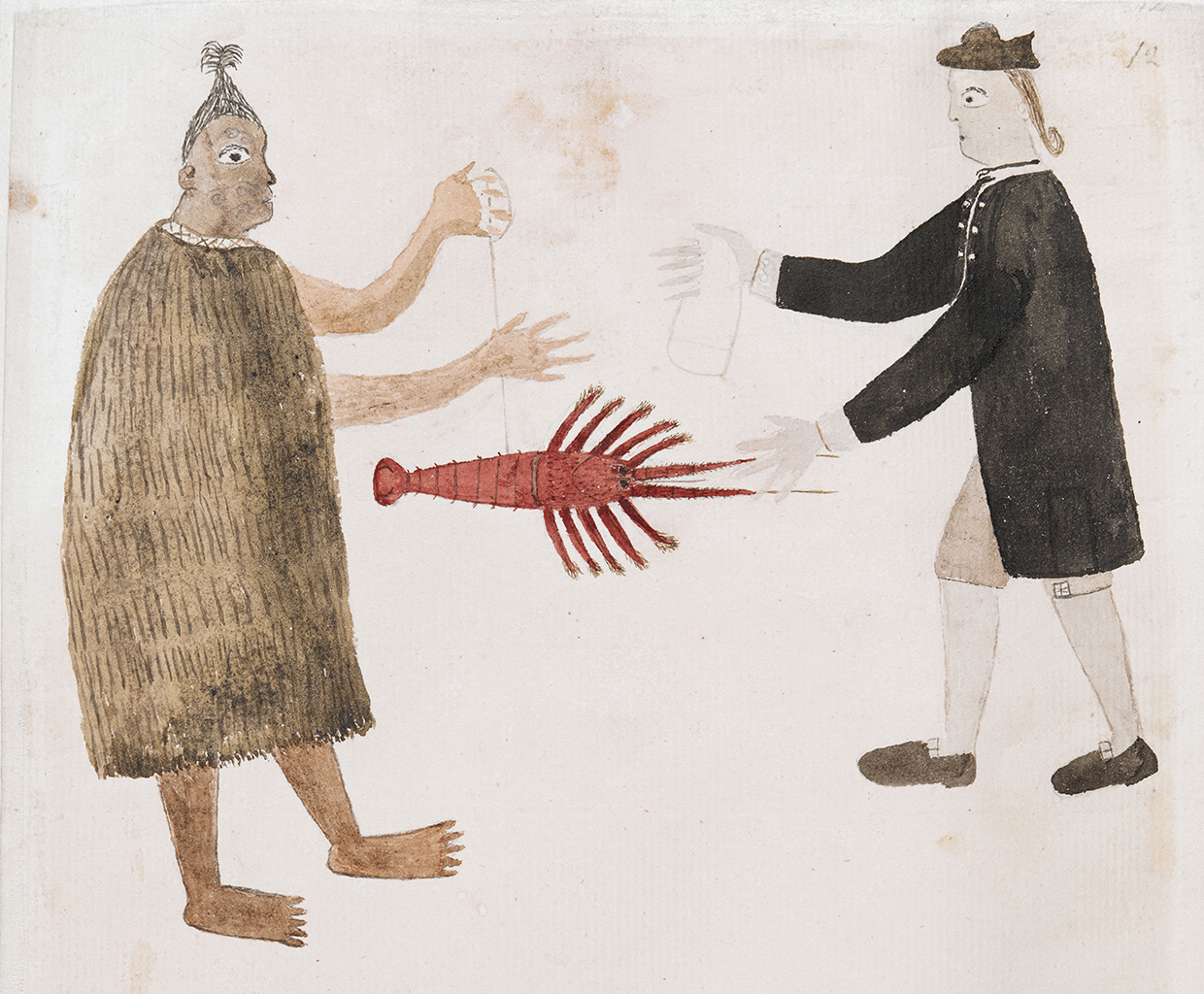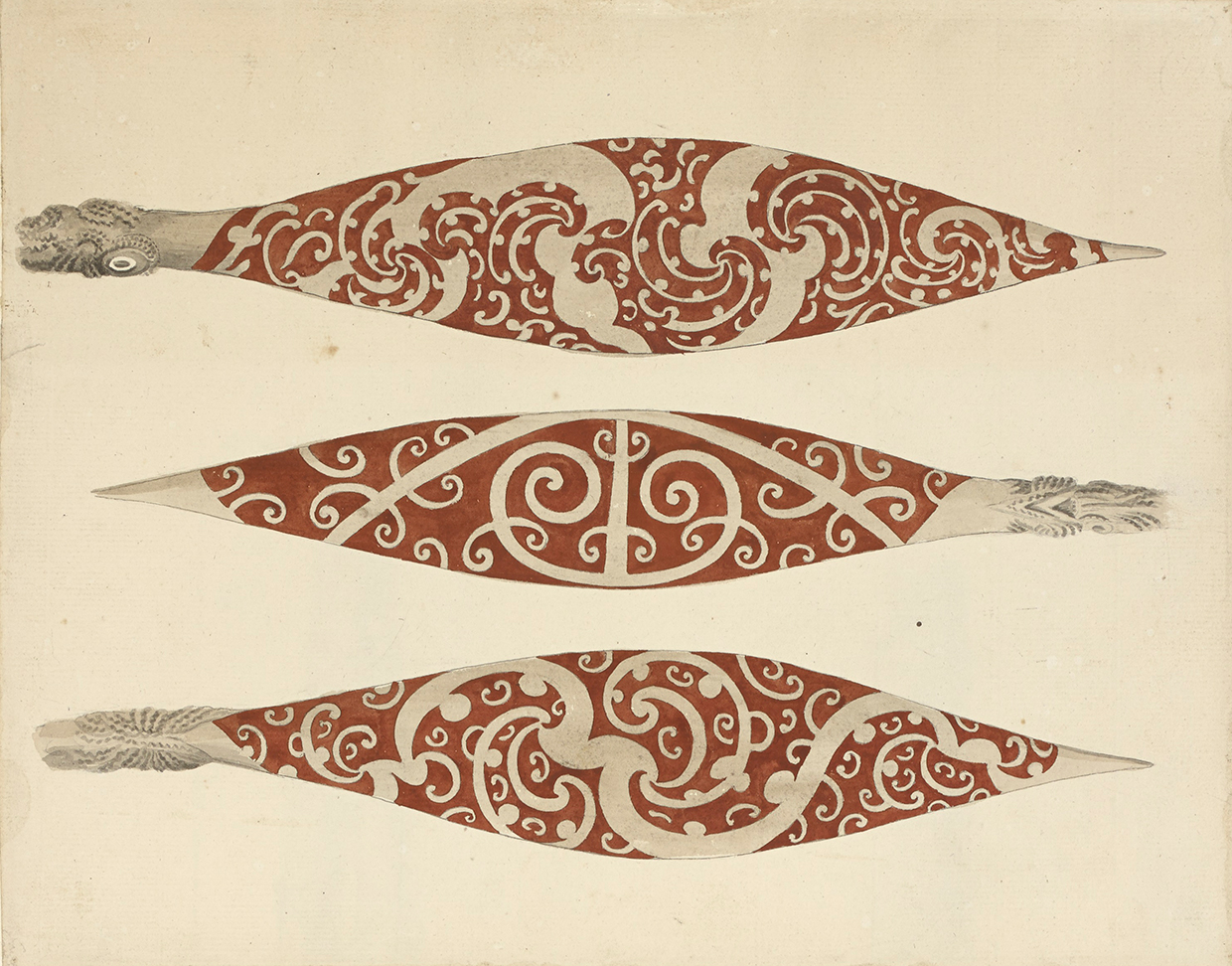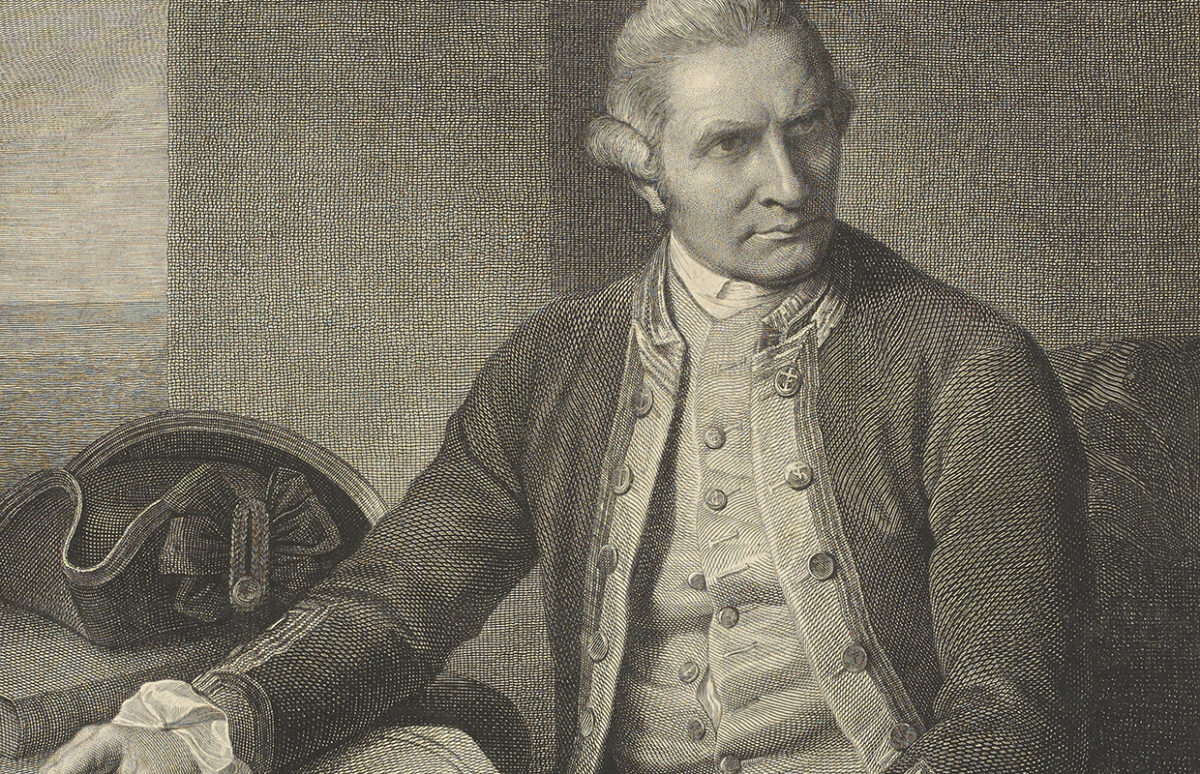250 years ago, Captain James Cook led the first of three expeditions to the Pacific which led to the colonisation of Australia and New Zealand. An exhibition at the British Library looks at the legacy of those expeditions, for Britain but also for the populations in the territories Cook visited.
Cook was a Royal Navy Captain skilled in cartography. His first voyage (1768-71) had an ostensibly scientific mission: to observe the transit of Venus in Tahiti in 1769, which would help scientists calculate the distance from the Earth to the Sun. However he had a second mission — to explore the Southern Hemisphere looking for lands ripe for colonisation.
European geographers were convinced there had to be a large landmass in the Southern Hemisphere that would balance the land in the northern part of the Globe. They referred to it as Terra Australis, but didn't mean Australia, which had already been partially discovered by Europeans. They believed it would be around the South Pole.
The expedition's crew were welcomed in Tahiti, and after making the astronomical observations they had come for, a skilled Polynesian navigator, Tupaia, joined the crew on its onward journey. The expedition didn't encounter a large Southern continent, but the reached New Zealand in October 1769. The country had been sighted by Dutch explorer Abel Tasman more than a century before but there had been no European contact since.

Tupaia was able to act as an interpreter as the Maori people were Polynesian, having arrived in New Zealand, or rather Aotearoa as they call it, 700 or 800 years previously. Despite this, the British managed to provoke three violent incidents in 24 hours, leading to several Maori deaths.
The expedition then spent several months circumnavigating the South Island and making the first detailed map of New Zealand before setting sail for Australia. Again, the first encounter with Aboriginal people ended with the British firing their muskets. And despite the land being quite clearly inhabited, Cook claimed possession of the entire eastern coast of the continent for Britain, baptising it New South Wales. Seventeen years later, the penal colony of New South Wales would be founded.

To the Antarctic
Cook's second voyage (1772-75) took him further south, into the Antarctic Circle, still looking for Terra Australis. His ships sailed closer to the Pole than anyone before, but he returned to Britain with no news to report of the mythical continent. He noted in his log book:
"I have now done with the SOUTHERN PACIFIC OCEAN, and flatter my self that no one will think that I have left it unexplor’d, or that more could have been done in one voyage towards obtaining that end than has been done in this."
The Final Voyage
Cook's third expedition to the Pacific (1776-80) would be, in all senses of the word, his last. This time his mission from the Admiralty was try to find the Northwest Passage, a route mariners have believed existed for centuries, allowing a short passage from the Pacific to the Atlantic via the Arctic, thus avoiding the long journey via the southern point of South America.
After various fruitless attempts at finding the Passage, in November 1778, the expedition sailed south for the Hawaiian Islands, which they had been the first Europeans to visit in January that year. In February, 1779, when the two ships of the expedition were anchored off Hawai'i, a boat disappeared from one of the ships. Once again showing cultural insensitivity, Cook took a Hawaiian elder hostage in order to demand the return of the boat. Violence broke out, and Cook, along with several of his men, was killed.
Cook's Legacy
Cook's three expeditions opened up the Pacific for colonisation. First Australia in 1787, then New Zealand in 1860, though not in exactly the same conditions. The British basically ignored Australia's Aboriginal people and considered the land available for use. They were more circumspect with the Maori in New Zealand, who had a reputation as fearsome warriors, and who had a hierarchical societal structure the British could recognise. The colony of New Zealand was founded based on a peace treaty with Maori tribes signed at Waitangi in 1860, although many of its provisions were later ignored.

The three expeditions included botanists, artist and linguists, and brought back information to Europe about plants, animals and societies that were totally unknown. One of the artists on the first expedition, Sydney Parkinson, drew the first depiction of a kangaroo ever seen in Europe. (The name was an approximation of the word he heard used by the Gweagal Aboriginal clan.)
Unfortunately, the cavalier spirit of the time meant that the British also took crops and animals with them to develop in the far-flung places they visited. These were meant to provide food for future expeditions, and generally bring sensible European innovations to primitive native people. At best, the crops failed to thrive. At worst, they ravaged existing ecosystems.
The Voyages of Captain James Cook
British Library, London
Till 28 August
The British Library is just a few minutes' walk from St Pancras Station if you're taking the Eurostar. Why not pop in?

This theme goes well with the section on Aboriginal culture in Speakeasy Files 3e: A Gap Year in the Australian Outback.
Tag(s) : "Antarctic" "Australia" "British history" "colonisation" "exploration" "James Cook" "New Zealand" "North-West Passage" "Pacific" "science" "Tahiti"





